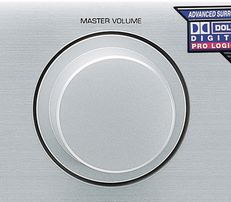
'Crank it to eleven'? What is the correct speaker volume?
"Has anyone noticed that when playing back music, every source has a "correct" volume? By that I mean the sweet spot.
"Increase the volume just 1 more and it becomes too loud and blaring, decrease it 1 less (than the sweet spot) and you can't quite achieve lift-off. Not enough "grunt factor" to rock out (or jazz out or symphony out or country out or...)
"It seems that each source has a perfect volume that varies. Or is this just me?" — Audiosavant
This post by Audiosavant, a forum regular, appeared in the Axiom Forums a while back and it deserves closer examination.
When we listen to music reproduction, we’re seeking a credible illusion of the real thing — realistic, plausible, but not overpowering. But what is "realistic"? Are we after the identical speaker volume (sound pressure level) that we’d experience with live musicians crammed into our living room? I don’t think so. Given the size of most domestic rooms in homes or apartments, actually experiencing the acoustic output of a trumpet, saxophone or full drum set would be intolerably loud.
So the scale of the space in which we’re playing back music comes into play. With few exceptions, acoustic instruments historically were designed to project their sounds into large spaces—ballrooms, concert halls and recital rooms—without the assistance of amplification (which hadn’t been invented), so by nature, most instruments are loud—really loud. If you need a reminder, just listen to street musicians or students busking for change in large cities. I was reminded of this the other day when I happened upon a jazz trio playing outside in front of the 72nd Street subway station in Manhattan. The musicians—a drummer, flugelhorn player, guitarist and stand-up bassist—were all playing totally unamplified, acoustically. I was startled by how loud the flugelhorn was—he was about 10 feet away from me and I had to step back because that thing was blaring. Now imagine putting that group into your living room or basement. They’d be deafening in that context.
We forget just how loud most instruments truly are, so we naturally adjust playback speaker volume to accommodate the size of the room we’re listening in. Imagine a big band with a horn section, reeds, saxophones, piano and drums congregating in your home? You wouldn’t be able to take the sound pressure level because a band is meant to acoustically fill a dance venue or hall and it would be out of scale in a typical living room. (If you know anyone who plays saxophone or trumpet, just listen to one played in a home. Those suckers are LOUD!)
The comparisons become even more ludicrous. A symphony orchestra in your den? A full opera and chorus made up of almost 100 musicians and 50 chorus members plus opera stars bellowing at top volume?
Sometimes, of course, with great speakers (you know the brand. . .) and multi-channel playback, you can duplicate the real-life sound pressure and presence of smaller groups—a string quartet, or a country/bluegrass group of guitar, bass, banjo and fiddle (of those, the banjo is the loudest) and do it in your room to a degree that’s almost uncanny.
If your speakers have the power handling and you have the requisite hundreds of watts, you can reproduce a plausible recreation of a rock band playing full tilt in your home.
But in most applications, there is an ideal playback volume, and it’s the one that results in music playback that’s most credible, the most believable in your particular setup. The playback volume doesn’t have to actually duplicate the real-life levels you’d hear if a bunch of horn players were sitting across the room from you on the couch opposite your chair!
—
Now that you know the correct speaker volume, check out this tip on Subwoofer Level Adjustments.





